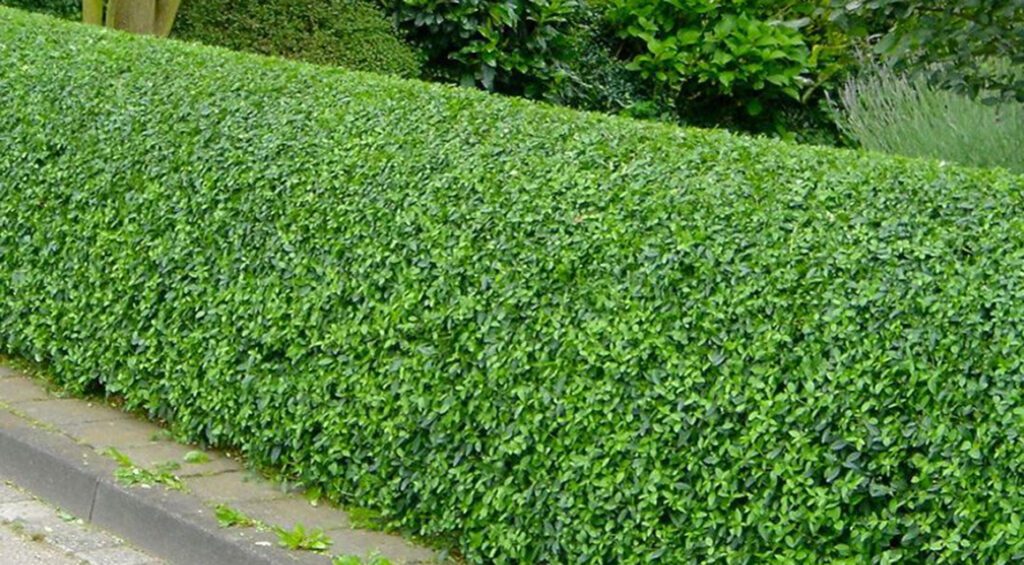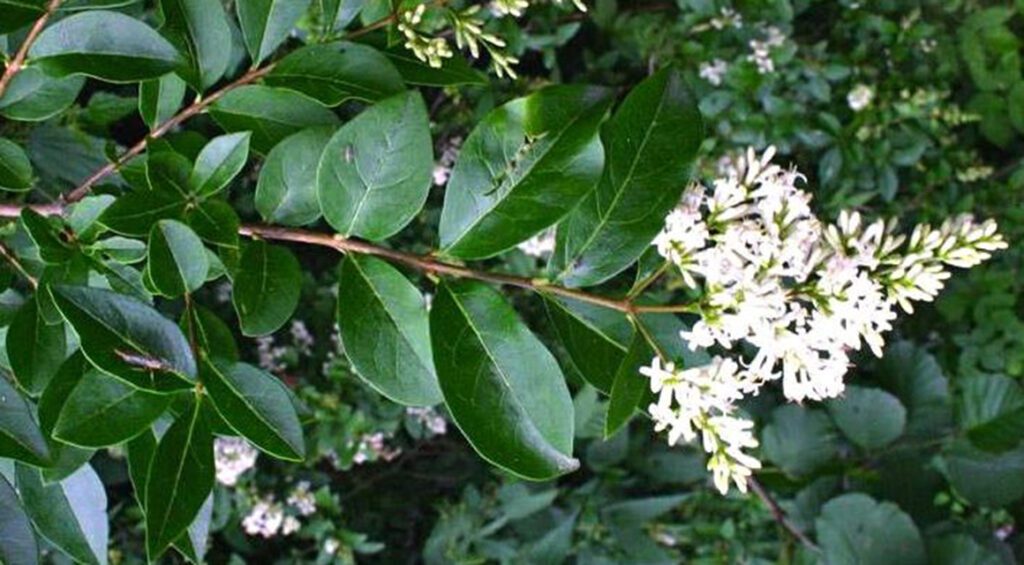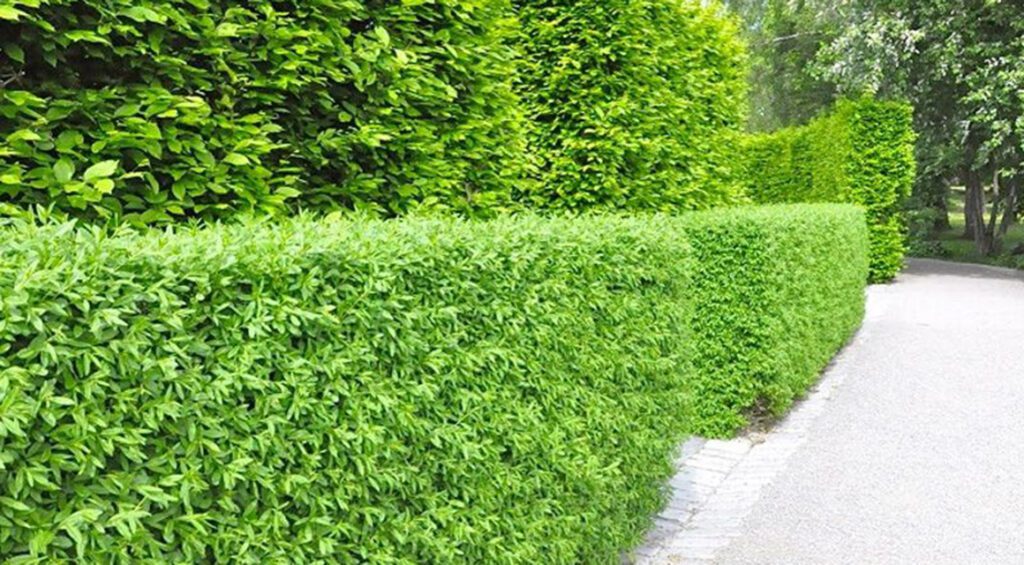You have certainly heard of these plants: the yew, boxwood, cherry laurel and beech, to name just a few examples. In this blog, we will deal with a plant that is also one of them. Therefore, learn more about the care of your privet here.

Contents
What kind of hedge can form privet?
Privet is a particularly pretty and popular hedge plant. There are good reasons for this. For example, compared to the cherry laurel, it has a fairly compact growth habit and relatively small leaves. This makes it quite easy to trim into a neat shape, which is why privet is often used as a formal hedge plant. Due to its maximum height of 4 – 5 meters and the fact that the privet drops almost no leaves in winter, it can also be used well as a privacy hedge.
However, privet is not among our evergreen hedge plants because it is only almost evergreen. Although the privet holds on to most of its leaves in the winter, it can still drop some of its leaves during strong gusts of wind or when temperatures are particularly frigid. However, privet has a green appearance in winter, while a beech hedge can provide winter protection only through the withered autumn leaves, because the brown autumn leaves remain attached to the branches of the beech hedge until early spring.

How should the privet be cared for?
This means that these plants are usually very easy to care for and do not require special conditions in the garden to grow. Privet is a hardy plant by nature and winter hardy well. It can grow well in most locations and in winter it does not need to be covered.
Young privet varieties should be watered adequately. Fertilizer may be added to the garden soil in which they grow. When watering, make sure that the water does not make the soil too compact so that the young roots can continue to grow and root well. Privet has a fairly fast growth, because it grows between 25-50 cm per year, which means that it should be cut back regularly. Therefore, most of the care consists of pruning mature varieties of privet.

The best time to cut the privet
Although privet usually holds its leaves in winter, it is still in winter dormancy at that time. In spring and summer privet grows the most. Therefore, the best time to cut privet is in mid-spring, before the longest day of the year. The first growth spurt has then already taken place, while the plant still has enough time to recover from pruning in the warm summer weather.
Pruning is best done on a cloudy or even rainy day, but this is true for any plant. Strong sunlight can quickly damage leaves that come out into the daylight after pruning. Pruning on days when rain and sun alternate should also be avoided because the raindrops will act as a magnifying glass, which will only cause the sun’s rays to burn more intensely on the leaf surface. When it rains or the humidity is particularly high, the branches of privet are much softer and more mobile, which makes them much less sensitive to pruning.

How should you proceed?
Privet is most often used as a formal hedge, because, as already mentioned, it has relatively small leaves. As a result, it is possible to cut around these hedge plants with an electric hedge trimmer or with a large hand hedge trimmer. This makes trimming your hedge much faster than trimming a cherry laurel hedge, which should preferably be trimmed back with small garden shears to avoid damaging the large, decorative cherry laurel leaves.
When trimming your hedge, make sure to keep the top of the hedge slightly narrower than the bottom of the hedge. This will keep all of the hedge’s leaves getting enough sunlight, which will help prevent brown spots in the hedge. Stretch a string to the height or width you want and cut off any branches that get out of line to create pretty, wonderfully straight hedges.

Different varieties of privet
Although these varieties have a lot of similarity with each other, so there are still differences when it comes to the appearance, care and location of the plants. For example, the privet differs from the common privet not only because it has bicolored leaves, but also because the privet is particularly insensitive when it comes to air pollution and salty air, which allows the privet to grow well along a busy road or along the coast.
The wintergreen privet ‘Atrovirens’ has an advantage that can already be deduced from its name: it is more hardy than other varieties, and as a result it loses much fewer leaves in winter than the common privet. Although this privet is ‘wintergreen’, it is actually only almost wintergreen. In fact, in extreme winter weather conditions, the wintergreen privet ‘Atrovirens’ can still lose its leaves or part of them, but this can only happen in particularly extreme weather conditions.
However, there is another important characteristic that can be found in all privet varieties and has not been mentioned until now: its popularity with birds. Privet has striking flowers in the spring, which later develop into small, black berries. Although these berries are poisonous to humans, they are particularly popular with birds. In addition, privet’s compact growth habit and strong branching provide a lot of protection when building birds’ nests. Therefore, a privet hedge will provide much more liveliness in your garden.

